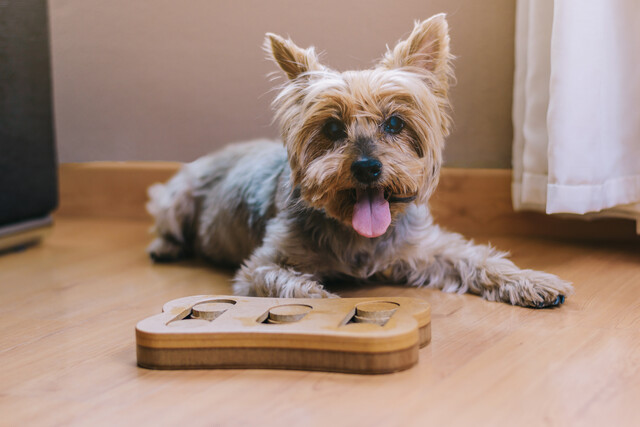Forms that are indispensable include:
� Schedule sheets.
� Rate sheets.
� Client and pet information forms.
� Time sheets.
� Daily reports.
� Service contracts.
� Invoices.
� Customer feedback forms.
� Notification forms.
Let us look at each of them individually.
Client and pet information forms
These are some of the most important forms you will use. You will need to have every client fill one out at the initial interview when you meet the pet you are going to be caring for or walking. An information form should have space for all of the information you need about the client and the animal, including emergency contact information, the animal's health information, and general information that may help you during the animal's daily care.
An excellent example of what should be included in a client or pet information form is shown on the following page. You will notice that it includes detailed information such as each pet's age and breed as well as emergency contacts. All of this is vital in case emergencies arise or a pet runs away while in your care.
Time sheets will be your bible for tracking your hours and how much you have charged each week. Keep them with you at all times and carefully record the hours you have spent each day on each individual client so that at the end of the day you can tally up how many hours you have actually spent pet sitting or dog walking and how many were billable hours. At the end of a month, you can review these to see how you are doing by comparing these to your cash outflow to see your profit-to-loss ratio.
Time sheets are also an excellent way to see where you are "losing time" that could be better spent. Did you have four hours that seemed to fly by but you only fit in one pet sitting job? What were you doing in those four hours? Running a bunch of little errands you could have combined? Taking a long lunch? By keeping track of every half-hour, you will teach yourself efficient time management. Many pet care professionals keep a three ring binder with time sheets in a tote or their vehicle so that they can track their time all day long by quickly jotting things down every time they get in or out of their car.
Daily Reports
These forms are given to your clients at the end of each day of pet sitting or dog walking. They detail what each day of your services was like for their pet. A dog walking report might indicate where you went, how far you walked, whether the dog had off-leash time and any changes in behavior that you noticed. A daily report for pet sitting will list all chores you did, from play time and waste removal in the yard to making sure that the snake was properly fed and talking to the parrot. Some pet sitters have pre-designed forms for pet sitting with check boxes for the most common chores while others prefer handwritten notes each day. This is a matter of preference and depends partly on the variety of animals you will be sitting for.
Service Contracts
Never, ever begin walking someone's dog or pet sitting for anyone without a signed service contract in place. Even if you are providing a service for only a day, you must protect yourself as well as the client by having signed documentation in place. You are taking their precious companion into your care and, if walking them, removing the animal from their home. Without the signed permission, this can be considered theft. A service contract must outline the specific services to be rendered, the duration of the contract, and what the expectations are from both the client and the provider perspective. The example on the following page is just one version, but it will give you an idea of what should be included in a simple contract.
Service Contract
All Star Pet Sitting
All Star Pet Sitting hereby agrees to provide the services outlined below to the client (___________________________) from ___________________________ at __________ o'clock to _______________________at __________ o'clock for the pets listed below:
1. _________________ M ( ) F ( )
2. _________________ M ( ) F ( )
3. _________________ M ( ) F ( )
4. _________________ M ( ) F ( )
All Star Pet Sitting is to make no less than _____ visits per day, with each visit lasting no less than 30 minutes each.
The total number of visits is to be __________ at $ _______ per visit for a total of _____________.
Services to be provided are outlined in detail in the attached form and will include (but not necessarily be limited to) feeding, providing fresh water, walking, social interaction, and other chores necessary to the health and well being of the above listed pets. The client waives any claims against All Star Pet Sitting except if All Star Pet Sitting fails in its duty to provide the agreed upon services. Payment for services is due upon completion.
Thank you for using All Star Pet Sitting.
_________________________ _______________________________
All Star Pet Sitting Client
Date: ________________
Invoices
Although you will have the cost of services mentioned in the service contract, many clients may request a separate, detailed invoice. Others will need to be reminded with an invoice mailed to them a few days after the service is performed. Mail invoices through regular U.S. mail, emails are too easy to delete and forget about, and most people still prefer paper bills so that they can retain them for their records.
Many professional dog walkers find that it is easiest to invoice regular clients on a monthly basis for their services. If you are walking some dogs daily at the same time and you have a long term contract, the owners may not want to pay you every day, so a weekly or monthly invoice will be more convenient. When you set up an invoicing schedule, mark your invoices clearly with an expected payment date, whether it is "Payable on Receipt" or "Please Pay Within 15 Days."
Invoices should never have just a total price, you should break out the individual costs.
********************************************
Month of November:
Dog walking for Princess Margo of Detroit
Week 1 M, T, W, Th, F 30 mins @ $15 each $75
Week 2 M, T, W, Th, F 30 mins @ $15 each $75
Week 3 M, T, W* 30 mins @ $15 each $45
Week 4 M, T, W, Th, F 30 mins @ $15 each $75
TOTAL FOR NOVEMBER $ 270
*I am so glad Margo got over her stomach bug!
********************************************
You will notice in the above example that there is a personal note included referencing the week that the dog was not walked for two days because she was sick. Clients always appreciate a personal touch.
Customer Feedback Forms
These forms can be as simple or as elaborate as you like. In most cases, a customer feedback form should be included with any invoice you issue or given to a client at the end of each pet sitting assignment of any duration. A few simple yes or no questions such as "Did your pet sitter fulfill all of his or her responsibilities satisfactorily?" and "Was your pet sitter on time for every appointment?" are a good start. You might also ask questions such as, "How do you feel that your pet responded to the pet sitter or dog walker?" and allow a line or two for responses. At the end of your feedback form, always leave some space and invite the client to make any suggestions or comments they would like.
Whenever a client takes the time to fill out a feedback form, send them a thank you note, even if the feedback is not positive! In fact, negative feedback can be a valuable way to learn where you need to improve, so do not discount it. Put your initial defensiveness aside and treat the comments like a businessperson. Use the comments as a tool, not a personal attack. You might even consider sending a discount coupon for future services to clients who fill out customer feedback forms. It will let them know you have actually read and taken their comments seriously.
Notification Forms
A notification form can be as simple as an index card. It notifies others that the client has given you permission as either a pet sitter or dog walker to have access to the pets and to make certain decisions while the pets are in your care. Although these may never be needed and are not strictly necessary, it is a good idea to fill out a few of these if you will be working long term with a client. Be sure it is typed out clearly and is signed by your client.
In general, the form should indicate who you are, what your status is as a care giver for the pets and that you are authorized to make temporary emergency decisions for the animals in question until the client can be contacted. Ask your client to give one to whomever is the emergency contact named after him or her (usually a friend, neighbor, or relative), the nearest neighbor, and to the pets' veterinarian so that it can be put in their file. You should also keep one with you when you are taking care of the client's pets.
Equipping Yourself and Your Vehicle
Clothing
Being neat and tidy is always appropriate when working, but you have a lot more leeway on what you are going to wear when you are working with animals. No one expects you to wear new, carefully coordinated, and accessorized outfits when you are handling several rambunctious animals at the same time. Suitability, including comfort and versatility, is much more important than style in this business.
Comfortable, breathable blends will be the most appropriate choice for most of your clothing. Some people prefer all cotton, but blends will be easier to keep clean, will shed stains better in the wash, and you will soon discover how quickly you will pick up stains! Blends that are part polyester or rayon will also dry more quickly than all cotton. Shorts and tees for warm weather, cargo pants or jeans with layered tops, for cool weather are good choices.
Layering is best because you will sometimes be walking, sometimes running, and sometimes standing around with your charges, so you will want to be able to peel layers off and put them back on. A lightweight jacket that sheds rain and some kind of rain hat is necessary; you cannot hold an umbrella when walking dogs. You need both hands available at all times.
For cold weather, always have several pairs of gloves on hand. They will quickly get dirty and wet on snowy days, and nothing feels more miserable than cold, wet gloves. Mittens are not your best choice because they give you less hand control.
Comfortable shoes will be your most important investment if you are a dog walker. Do not skimp on the cost of a good pair of sneakers or walking shoes for spring and summer. Do not ever wear sandals or flip-flops on a job, they can trip you up and they are more likely to catch on uneven pavement or become entangled in leashes. For cold weather, buy insulated, waterproof boots that cover the ankles and will withstand slogging through deep snow.
Some people like wearing a vest with lots of pockets such as a fishing vest to tuck various essentials into; others use either a backpack or large tote back that they can sling across their bodies. Any of these will work; it depends on what is your personal preference.
Gear
What will you carry in your vest pockets, tote bag, or backpack? There are several indispensable items every pet sitter or dog walker should have with them. If you are primarily a pet sitter, you can probably carry many of these items in the trunk of your car. For dog walking, however, you should keep these items nearby:
|
� Spare collar (adjustable). � Spare leash. � Plastic dog waste cleanup bags. � Treats. � A whistle. � Anti-bacterial hand gel. � Small package of wipes. � Muzzle in case of injury or other emergency. � Small pet first aid kit. � Tennis ball. � Flashlight. |
Equipping Your Car
There is also some gear that you should always keep in the trunk of your car, near enough to get to when you need it, but not necessary to lug with you while walking the dogs. You can carry them if you are sure that you will be using them on a particular day.
|
� A jug of water (for drinks on hot days or cleanup on muddy days). � Towels for cleanup. � Extra toys and tennis balls. � Larger first aid kit. � A collapsible water bowl. � Blanket. � More dog waste cleanup bags. (You can never have too many!). |
You should also cover the seats of your cars with seat covers that can easily be removed and washed periodically. If you do not want to invest in fitted covers, large towels work very well to keep shedding to a minimum in your car and protect the upholstery from unpleasant accidents, like vomiting, if you are transporting a sick or over-excited dog.
























